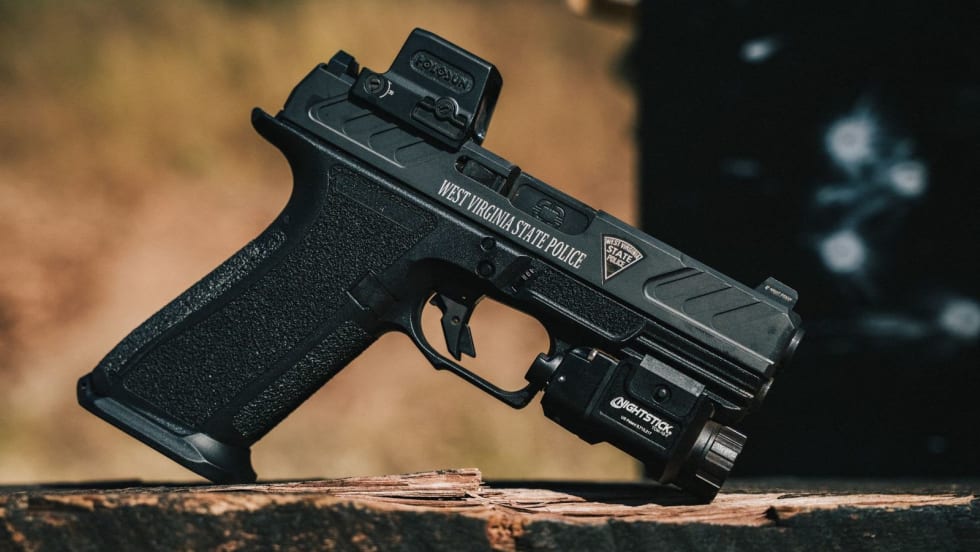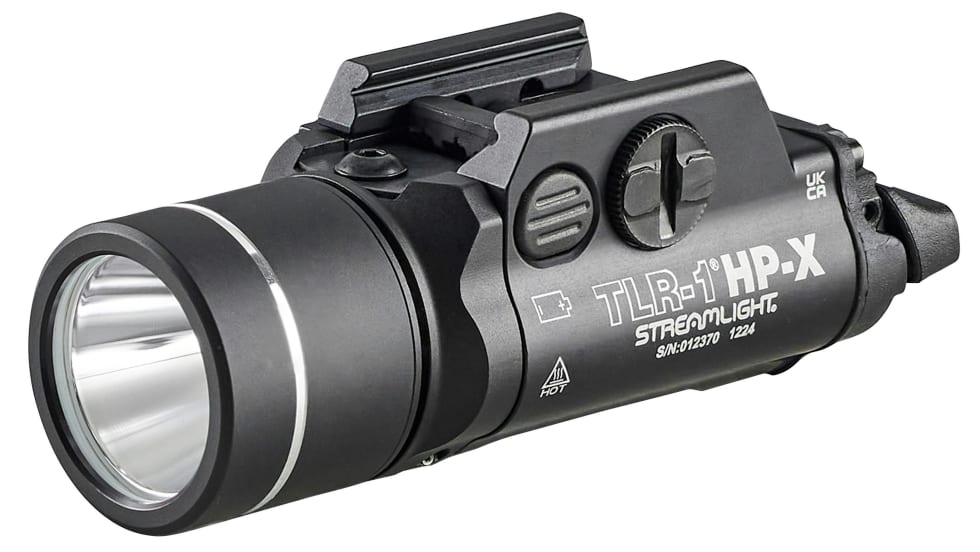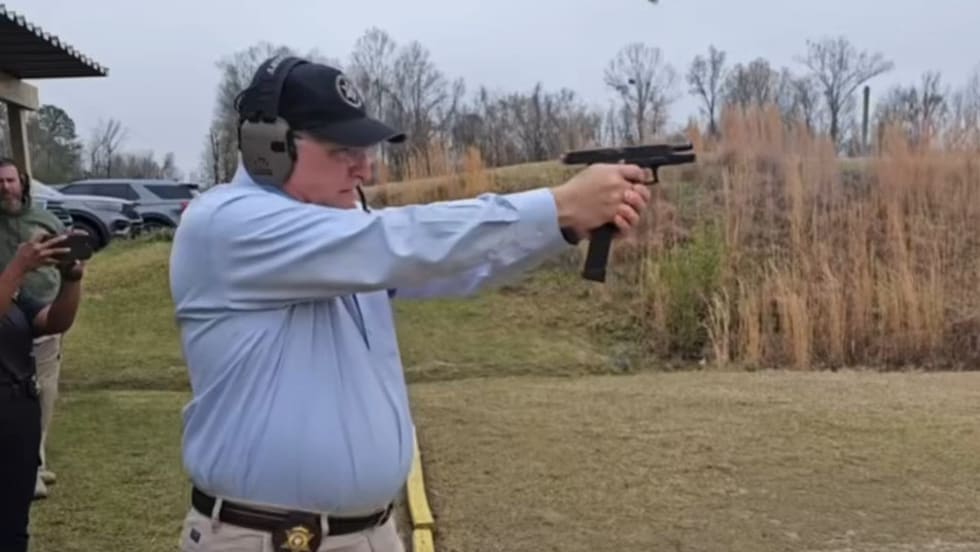The weapon is loaded by taking a live cartridge in one hand and the M26 in the other. Ensure the safety is down and point the weapon in a safe direction. Squeeze the release buttons on each side of the cartridge with thumb and index finger and place it firmly into the open, muzzle end. The cartridge cannot be put in upside down or backwards.
The weapon can be carried in a variety of ways, with the most common and practical methods utilizing the two holsters available from the manufacturer. One is a black nylon "leg drop" that attaches in seconds to the weak side of an officers duty belt. The second is a conventional belt mount, which requires the officer to wear the M26 during the entire shift. This clearly ensures ready availability should a spontaneous event occur. Likewise, a gun on each hip will generate more than a casual glance from the citizens you meet on the street!
Deploying
Moving the safety into the "up" position arms the weapon. Immediately, a red laser dot is projected from the front and a flashing red "battery indicator" is visible at the rear. The laser dot is placed on the intended target and the trigger/switch is pulled. Two small probes are propelled at 175 feet per second at distances up to 15 or 21 feet (depending on the cartridge) by non-pyrotechnic compressed nitrogen. The top probe is designed to strike within an inch of the laser dot. The bottom probe is designed to strike directly below at an 8-degree trajectory. This causes a spread of roughly one-foot for every seven feet of travel.
The probes are connected to the weapon by high-voltage insulated wire. When contact occurs, electrical pulses are transmitted into the suspect's body. The probes are able to deliver their electrical charge through two inches of clothing. The transmission continues for five seconds regardless of the trigger position, unless stopped by the operator moving the safety into the "down" position.









